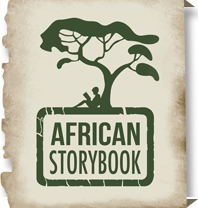



Monthly Archives: January 2017
Monthly Archives: January 2017
This is apparently an example of the largest nest on earth. Home to as many as 500 birds, it’s a sociable weaver’s nest, a feature of the drier, south-western parts of South Africa; the southern Kalahari and northern Cape Karoo. A natural architectural phenomenon, the structures are so big, with as many as 100 ‘chambers’, that they can collapse the trees and the telegraph poles they’re built in and around. The chambers face the ground, making it more difficult for the Cape cobra or boomslang (tree snake) and the pygmy falcon to hunt them. Having seen so many of these nest though my life, I had a sudden yen to know which trees the nests are built on, and google threw up Acacia erioloba, Boscia albitrunca and Aloe dichotoma as answers. This is the acacia erioloba, on Witsand Nature Reserve, same place as last week’s image of the Springbok. https://www.witsandkalahari.co.za/ hashtags: #witsand #kalahari #sociableweaver #africanstorybook #angusbegg #immedia #northerncape #witsandnaturereserve #SAT #southafricantourism #northerncapetourism
This is an elderly springbok, South Africa’s national animal, at a waterhole in Witsand Nature reserve, in a southern corner of the arid Kalahari sand system. From the fact that it was alone, and heavily scarred on its nose, I knew it was a bull. The scars are the result of rutting, a battle for dominance that he probably lost to a younger male; you can just make out the scars below the brown blaze and his eyes.I was in a hide, which made it possible to get this close, although every time I moved, to change lenses or to swat a fly, he dashed off, slowly returning a little later. That happened five times. Witsand is pure magic for the bush enthusiast who doesn’t need the ‘Big Five’. It consists of massive, blue sky by day and a gazillion starts by night, especially at new moon. Accomodation is in a handful of beautiful and private, large thatched chalets, positioned in the bush so that one isn’t in sight of the other – which led me to feel I was the only one there. For this reason the animals also feel they have the run of the place, with mongoose, jackal, striped field mice and birds visiting the bird-bath daily, “ Unfazed by the humans”, says Owen, the Witsand tourism manager who gave me a bed for the night. In the less than 24 hours I spent there, duikers were always browsing around the camp.The camp has a pool, as it gets very hot in summer, and there are hikes and walking trails laid out.I’ve been wanting to visit for years, and on driving back home to Cape Town from Jo’burg I had decided to drive a little west via Witsand; a quieter road with no tolls and plenty of discovery. It was a good choice. PS – Ask Owen why the camp has unlimited water. And about the pangolins and the farmers and the animal rehab centre. https://www.witsandkalahari.co.za/
Recent Posts
Archives
- November 2017
- October 2017
- September 2017
- July 2017
- June 2017
- May 2017
- April 2017
- March 2017
- February 2017
- January 2017
- December 2016
- November 2016
- October 2016
- September 2016
- August 2016
- July 2016
- June 2016
- May 2016
- April 2016
- February 2016
- October 2015
- June 2015
- April 2015
- March 2015
- November 2014
- September 2014
- June 2014
- March 2014
- December 2013
- August 2013
- June 2013
- May 2013
- April 2013
- March 2013
- January 2013
- December 2012
- November 2012
About Angus Begg
Angus is a Private Guide / CNN award-winning Journalist taking Tourists through Cape Town, South, East and Southern Africa.
Angus is serious about his craft. With considerable experience in the various media – TV, print, radio, photography and the internet – Angus has covered every aspect of travel, whether rural communities clashing with wildlife, tracking the Serengeti migration, hiking Table Mountain or searching for that perfect sauvignon blanc.
Discover African Storybook
Follow us on Social Media
Instagram: @african_storybook
Twitter: @angusbegg
Recent Posts
-
Your Weekly African Picture Story – week 40
When I met Cobra, at a magnificently desolate safari...
-
Your Weekly African Picture Story – week 39
Cape Town is booming in popularity as a world destination....



